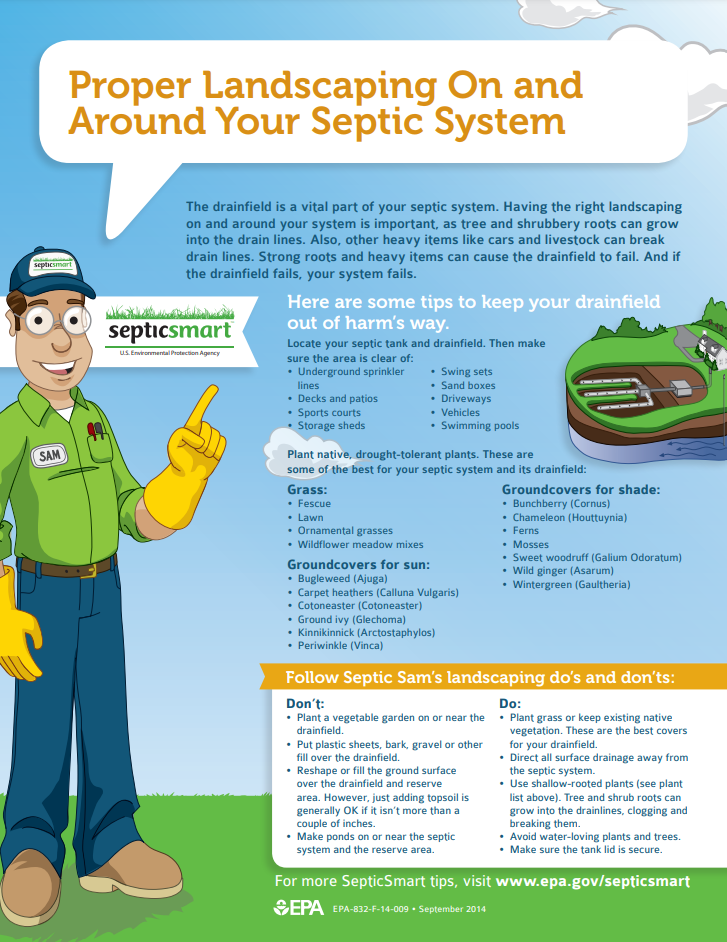Septic Drainfield: Tips for Septic System Care
Without paying close attention to protecting your drainfield, your septic system could fail – costing you a lot of money. Your drainfield is the component of your septic system that removes contaminants from the liquid coming out of you septic tank. If your drainfield fails, your septic system is contaminating the area and possibly your water supply.
DRAINFIELD: THE BASICS
What is a drainfield? Septic drainfields, are also called leach fields or leach drains, and are subsurface wastewater disposal facilities used to remove contaminants and impurities from the liquid that emerges after anaerobic digestion in a septic tank.
SHIELD YOUR FIELD (PROTECT YOUR DRAINFIELD)
DRAINFIELD DO’S and DON’TS
DO:
• Plant grass or keep existing native vegetation. These are the best covers for your drainfield.
• Direct all surface drainage away from the septic system.
• Use shallow-rooted plants (see plant list above). Tree and shrub roots can grow into the drainlines, clogging and breaking them.
• Avoid water-loving plants and trees.
• Make sure the tank lid is secure.
CLEAR SEPTIC AREA OF:
BEST PLANTS FOR YOUR DRAINFIELD
Groundcovers for sun:
• Bugleweed (Ajuga)
• Carpet heathers (Calluna Vulgaris)
• Cotoneaster (Cotoneaster)
• Ground ivy (Glechoma)
• Kinnikinnick (Arctostaphylos)
• Periwinkle (Vinca)
Groundcovers for shade:
• Bunchberry (Cornus)
• Chameleon (Houttuynia)
• Ferns
• Mosses
• Sweet woodruff (Galium Odoratum)
• Wild ginger (Asarum)
• Wintergreen (Gaultheria)
WHY SEPTIC SYSTEMS FAIL
24/7 EMERGENCY SEPTIC SERVICES NEAR YOU
We service the Northern Ohio area including Erie, Lorain, Medina, Portage, Stark, Summit and Wayne counties. Our family-owned septic company is the one to call for all of your emergency septic tank services, including septic tank pumping. We can work around your schedule when it’s convenient for you, including working on weekends and evenings.

